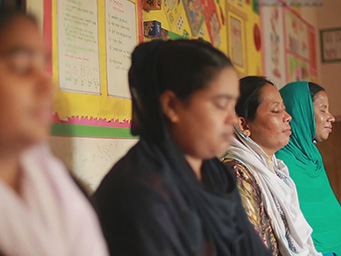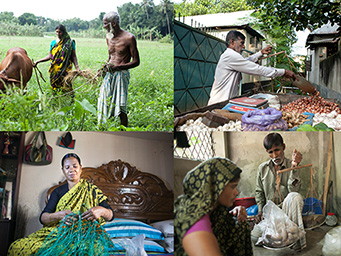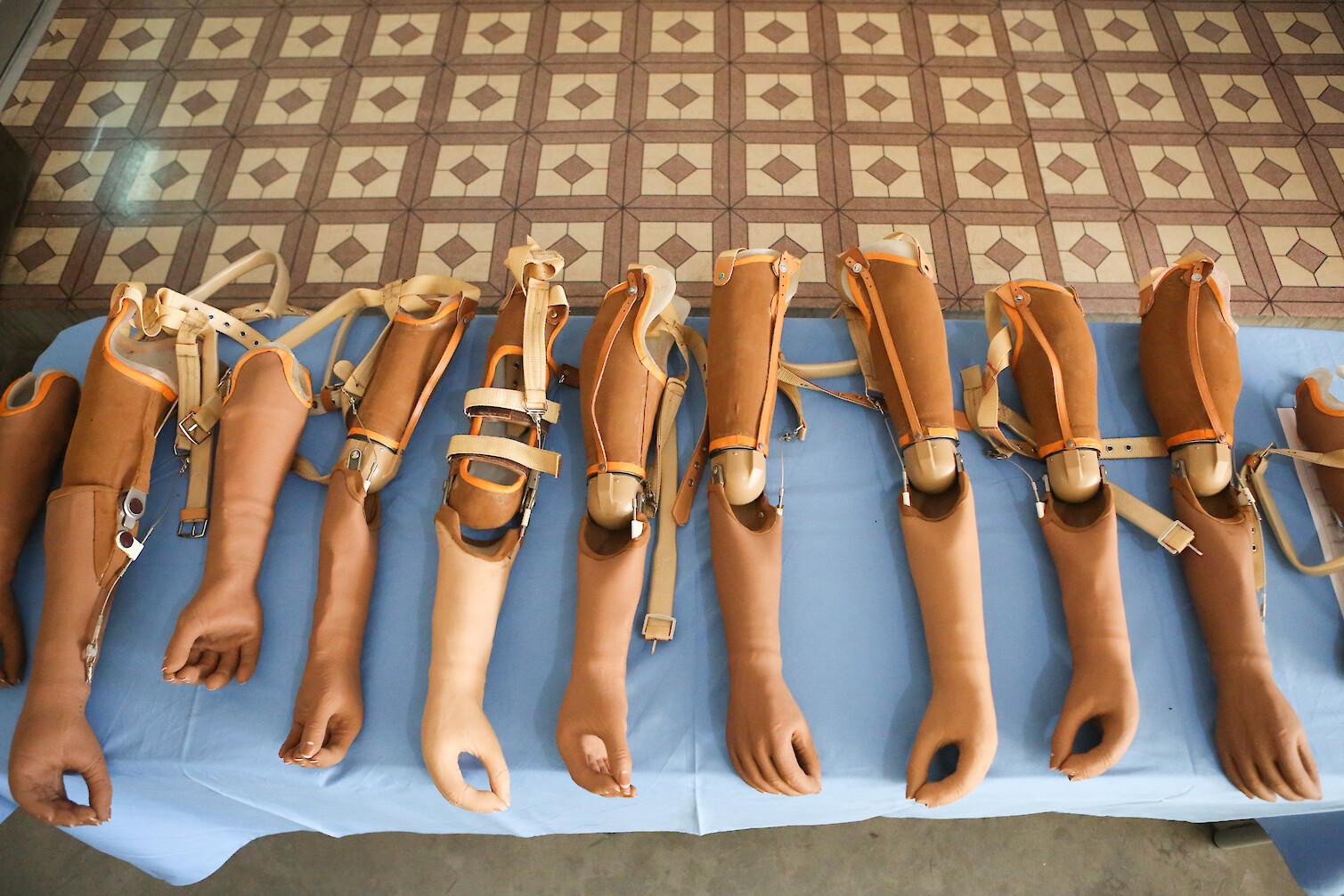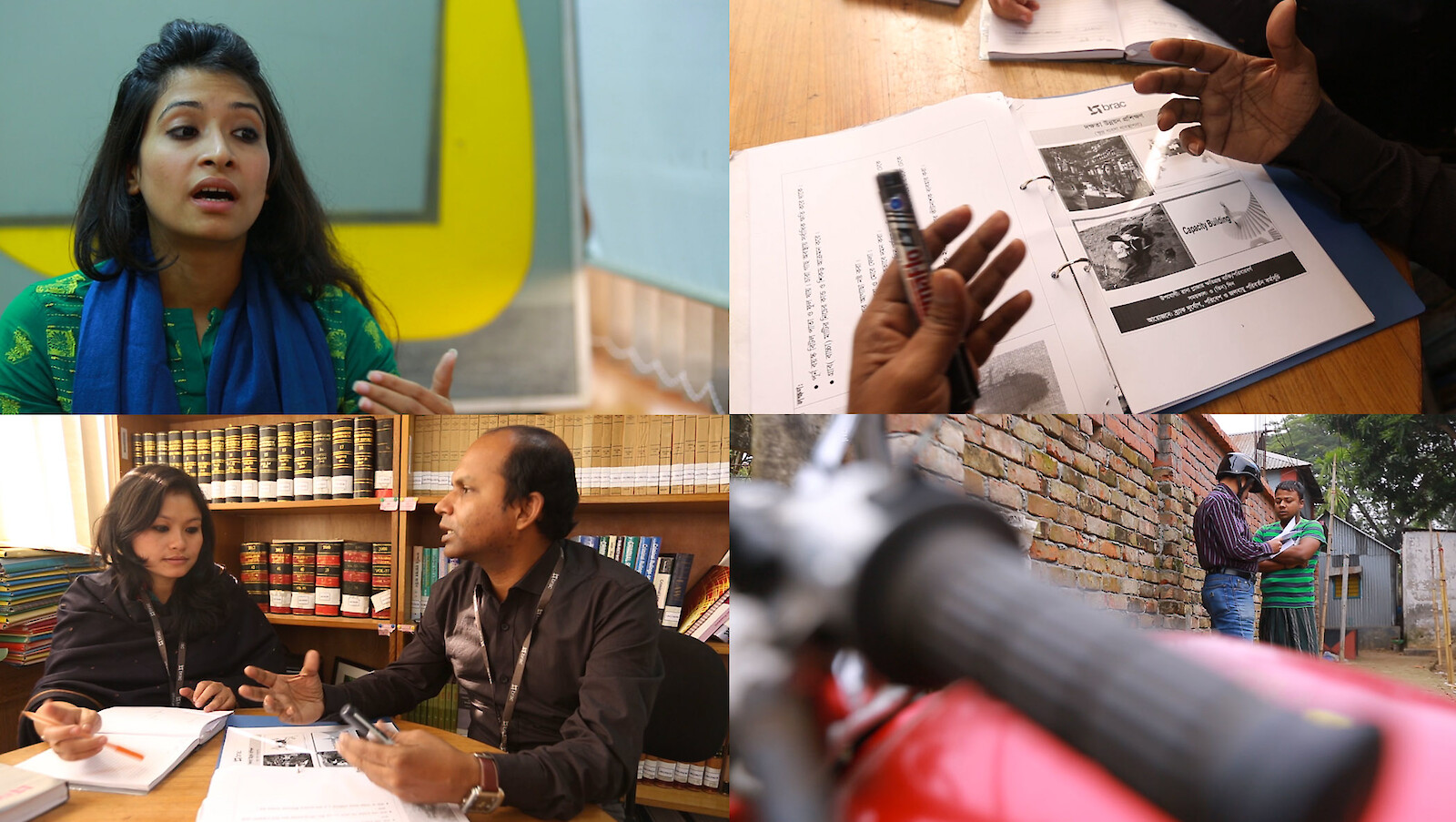Rising from Rana Plaza
Pervin Khatun lost her husband in the Rana Plaza disaster. “He was the sole breadwinner and I had no prior work experience”, she said. “But running this grocery store will give me a steady income and I can continue to support my family.”
Pervin received support to set up her grocery store as part of a project initiated by BRAC and Benetton Group. “To help those affected by the consequences of the tragedy overcome the trauma and find their way back to something like a normal life is a challenge to which we would like to contribute”, said the programme head of BRAC’s disaster, environment and climate change programme. The project has provided several survivors and victims’ family members with livelihood opportunities that can sustain them in the years to come. This has helped recipients like Pervin and others regain control of their own lives and that of their dependents. A number of amputees have also been provided with upper limb prosthetics. Those who have received both livelihood support and prosthetics have also simultaneously received psychosocial counselling to help them cope with the trauma.
In order for change to occur, the voices of the industry’s workers must be heard. To commemorate those who lost their lives and highlight the journeys of those who continue their struggle despite the challenges, BRAC and Benetton Group showcase some stories. We hope that sharing stories from survivors about their hardships and motivation to persevere, even in the face of tragedy, will project a more holistic view of the issues relating to the industry both locally and globally.
In this section we want to let them tell their stories, with images and videos that bear testimony to their willingness to move with their lives and look to the future with hope. Continue to follow us here.

LEARNING TO MOVE FORWARD
By Anushka Zafar
Kabir Mollah was pulled out from under the remains of Rana Plaza four days after the collapse.
Now every time he goes into a high-rise building, he gets anxoius. Shiuli Khanom was also rescued after four days.
“Even though I survived, I felt hopeless”, she says.”I couldn’t sleep. I had so many thoughts and worries. I was shaken and afraid and also physically weak.”

A NEW BEGINNING
By Anushka Zafar
“Since the collapse, I am too afraid to go back inside a garments factory,” said Ankhi, who used to work in Rana Plaza along with her husband. Although she survived, her husband’s body was never found. Left to provide for their daughter on her own, she had to find another means to survive.

WHAT DO YOU DO AFTER LOSING A LIMB IN A FACTORY COLLAPSE?
By Anuska Zafar
Right after the Rana Plaza collapse, a special committee from the Bangladesh Prime Minister’s Office decided that BRAC would assist in the rehabilitation of amputation survivors. Specialising in upper limb prosthetics support, BRAC’s limb and brace centre (BLBC) has been providing these services, frequently working with the government and other NGOs to reach those who have lost limbs through accidents and diseases.

FACING THE CHALLENGES
By Anuska Zafar
“I had never seen such a large-scale calamity before,” said Puja Gloria Rodrigues, psychosocial counsellor from BRAC University’s Institute of Educational Development (IED). Three days after the Rana Plaza collapse, she arrived at the National Institute of Traumatology and Orthopaedics Rehabilitation (NITOR) in Dhaka along with a group of counsellors.